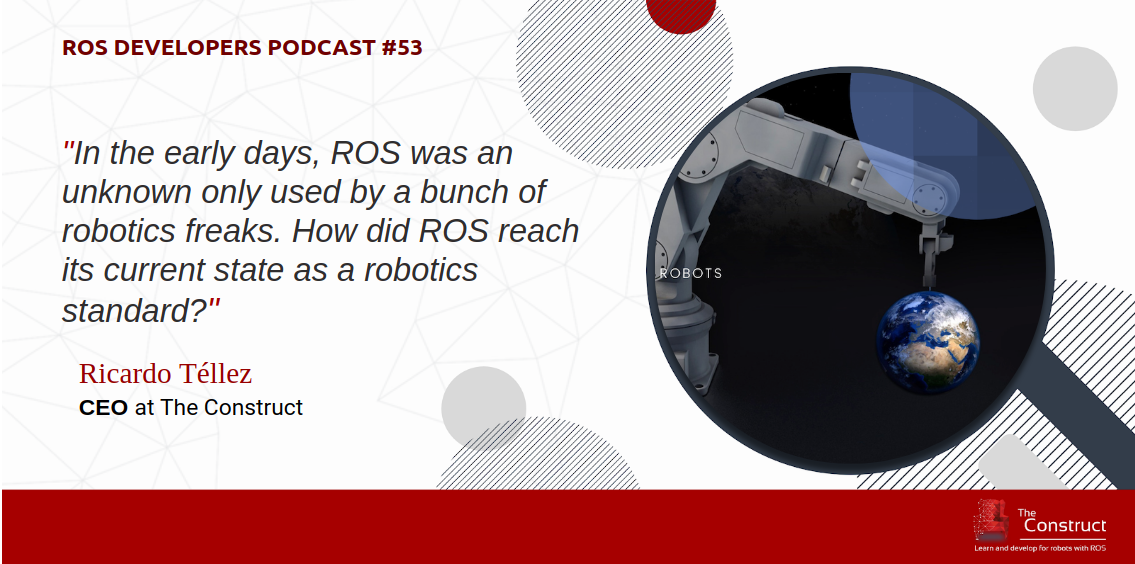ROS (Robot Operating System) is now very popular among roboticists. Researchers, hobbyists, and even robotics companies are using it, promoting it and supporting it. However, it was not always like that. Do you know ROS history? In the early days, ROS was an unknown only used by a bunch of robotics freaks. How did ROS reach its current state as a robotics standard? Let’s see in this podcast how ROS got to its current superior status.
Related links:
- Keenan Wyrobek and Eric Berger
- the Stanford Personal Robotics Program
- Player/Stage, one of the most famous in the line of open source
- URBI in the line of proprietary systems
- Open-R, the system developed by Sony which powered the early Aibo robots of 1999
- Another similar system developed in Europe was YARP.
- Scott Hassan, investor and the founder of Willow Garage
- first distribution of ROS was released: ROS Mango Tango
- Box Turtle, in 2010
- ROS C-Turtle, in 2010
- Diamond Back, in 2011
- ROS Electric Emys, in 2011
- ROS Fuerte Turtle, in 2012
- ROS Groovy Galapagos, in 2012
- release of Turtlebot robot
- Willow Garage ‘announced’ that the company would dissolve
- ROS Hydro Medusa, in 2013
- ROS Indigo Igloo, in 2014
- ROS Jade Turtle, in 2015
- ROS Kinetic Kame, in 2016
- ROS Lunar Loggerhead, in 2017
- ROS Melodic Morenia, in 2018
- ROS Metrics
- The Robot Ignite Academy, our online academy that teaches you ROS in 5 days using simulations
- The ROS Development Studio, our online platform to program ROS online only with a browser
- The ROS Developers Podcast full-length tune.
Subscribe to the podcast using any of the following methods
- ROS Developers Podcast on iTunes
- ROS Developers Podcast on Stitcher
Or listen to it on Spotify:
Podcast: Play in new window | Download | Embed
SUBSCRIBE NOW: RSS






0 Comments